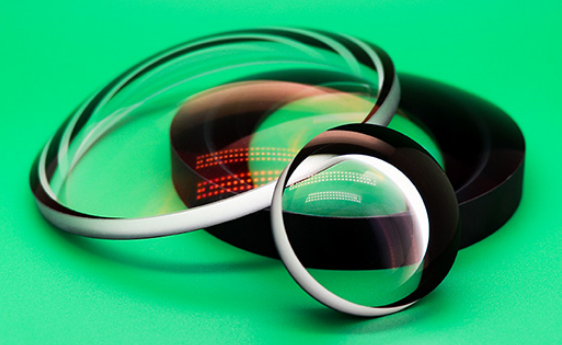What Is the Difference Between Silica and Fused Silica Lenses?
Oct. 13, 2023
Silica and fused silica lenses, while sharing a similar chemical composition, exhibit distinctive characteristics that make them suitable for different applications in the field of optics. To comprehend the differences between these two types of lenses, it's essential to delve into their composition, manufacturing processes, properties, and applications.
Silica Lenses
Silica lenses, also known as quartz lenses, are crafted from naturally occurring silica, which is a compound of silicon and oxygen (SiO2). Silica is one of the most abundant minerals on Earth and can be found in various forms, including quartz crystals and sand.
Composition
Silica lenses are made from naturally mined quartz or synthetic fused silica. The chemical composition of silica lenses is SiO2, the same as that of silica, and this gives them a crystalline structure. The clarity and transparency of silica lenses make them ideal for various optical applications.
Natural or Synthetic
Silica lenses can be manufactured from either naturally mined quartz or synthetic fused silica. Natural quartz is sourced from geological formations, while synthetic fused silica is created through high-temperature melting and cooling processes. Both offer excellent optical properties, but synthetic fused silica lenses are often preferred for specific applications due to their higher purity and controlled manufacturing.
Optical Properties
Silica lenses are known for several key optical properties:
- Transparency: Silica lenses are optically clear, allowing them to transmit light with minimal distortion.
- High Refractive Index: Silica has a high refractive index, which makes it suitable for applications where focusing and bending of light are necessary.
- Thermal Resistance: Silica lenses can withstand high temperatures without significant optical degradation, making them valuable in high-temperature applications.
Applications
Silica lenses are commonly used in a range of optical systems and devices, including:
- Camera Lenses: Silica lenses are used in cameras to focus and capture images.
- Microscopes: They are employed in microscopes for magnifying and observing small objects.
- Spectrometers: Silica lenses help disperse and analyze light in spectrometry.
- Laser Systems: These lenses are utilized in laser systems to focus and shape laser beams.
- Telescopes: Silica lenses are part of optical systems in telescopes, aiding in viewing distant celestial objects.
Fused Silica Lenses
Fused silica lenses are synthetic lenses crafted from fused silica, a pure form of amorphous silicon dioxide (SiO2). The amorphous structure of fused silica sets it apart from crystalline silica, and it is this structure that contributes to its distinct optical properties.
Manufacturing Process
The manufacturing process of fused silica lenses involves producing pure silicon tetrachloride (SiCl4) and then burning it in a high-temperature flame to create amorphous silica particles. These particles are subsequently fused together as they cool, resulting in a solid material with exceptional optical properties.
Optical Properties
Fused silica lenses exhibit unique optical characteristics:
- High Purity: Fused silica is highly pure, with minimal impurities and inclusions, making it valuable in applications requiring optical precision.
- Low Thermal Expansion: Fused silica has a low coefficient of thermal expansion, making it resistant to thermal shock. This property is beneficial in high-temperature applications.
- UV Transparency: Fused silica is highly transparent in the ultraviolet (UV) region of the electromagnetic spectrum, making it essential in UV optics.
Applications
Fused silica lenses find application in various optical systems and industries, including:
- Semiconductor Manufacturing: Fused silica lenses are used in photolithography for semiconductor manufacturing, where precision and UV transparency are critical.
- Analytical Instruments: These lenses are employed in analytical instruments like spectrophotometers and fluorescence microscopes.
- Astronomy: Fused silica lenses are used in telescopes and astronomical observatories to observe celestial objects in the UV range.
- Medical Instruments: They find application in medical devices such as UV spectrometers and analytical equipment.
Differences Between Silica and Fused Silica Lenses
Now that we've explored the characteristics of silica and fused silica lenses, let's summarize the key differences between the two types of lenses:
1. Origin: Silica lenses can be crafted from natural quartz or synthetic fused silica, whereas fused silica lenses are exclusively manufactured from synthetic fused silica.
2. Structure: Silica lenses have a crystalline structure, while fused silica lenses have an amorphous (non-crystalline) structure.
3. Purity: Fused silica lenses are known for their high purity, with minimal impurities and inclusions, while silica lenses may have impurities depending on their source.
4. Thermal Properties: Fused silica lenses have a lower coefficient of thermal expansion, making them highly resistant to thermal shock, whereas silica lenses may not be as resilient in high-temperature applications.
5. UV Transparency: Fused silica lenses exhibit superior transparency in the UV range, making them indispensable in applications requiring UV optics.
Conclusion
In conclusion, while both silica and fused silica lenses share a SiO2 chemical composition, they differ significantly in their origins, structures, properties, and applications. Silica lenses, whether derived from natural quartz or synthetic fused silica, are renowned for their optical clarity and transparency, making them ideal for various optical systems. In contrast, fused silica lenses, created through a controlled manufacturing process, offer superior purity, low thermal expansion, and exceptional UV transparency. These properties make them essential in high-precision applications, particularly in the fields of semiconductor manufacturing, analytical instrumentation, astronomy, and UV optics. Understanding these distinctions is essential for selecting the appropriate lenses for specific optical requirements and industries.






















